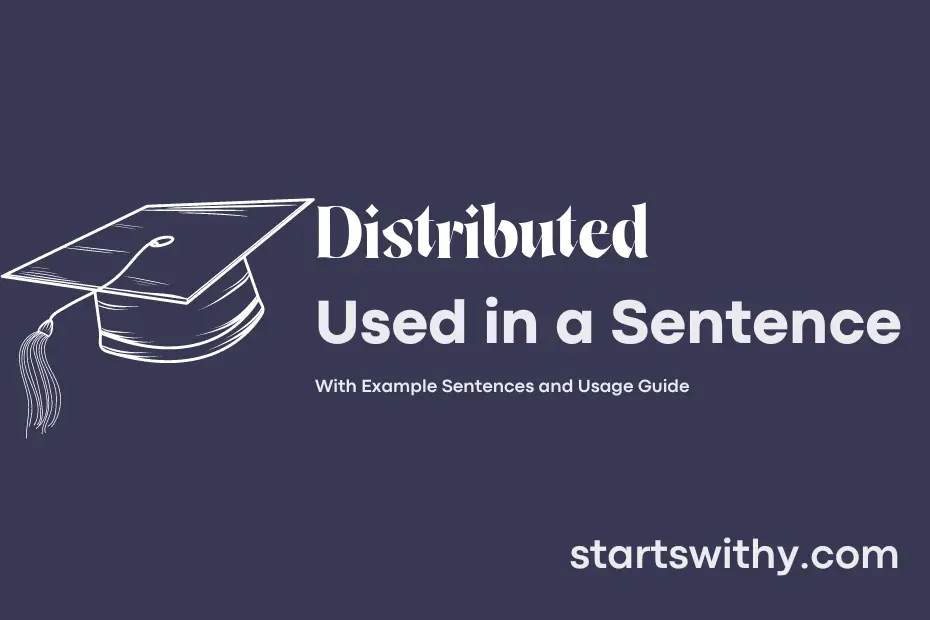Have you ever wondered what it means for something to be “distributed”? In the realm of data processing and system architecture, the term “distributed” refers to a method of organizing and managing resources across multiple nodes in a network.
When a system or data is distributed, it is divided and spread out among different interconnected computers or servers. This approach enables tasks to be carried out simultaneously by different components, leading to improved efficiency, scalability, and fault tolerance.
7 Examples Of Distributed Used In a Sentence For Kids
- Distributed snacks to share with your friends.
- Can you help me distribute the crayons to everyone?
- The teacher distributed toys for us to play with.
- Let’s make sure that the sweets are distributed equally.
- We will distribute books to read together.
- The fruits will be distributed during snack time.
- It’s important to distribute things fairly among everyone.
14 Sentences with Distributed Examples
- Distributed laptops are being provided to all first-year students for online classes.
- The professor distributed the study material through the college’s online portal.
- The scholarships were distributed among deserving students based on their academic performance.
- The college canteen distributed free meals to students during the annual charity event.
- The assignments will be distributed to students via email before the deadline.
- The student council distributed pamphlets to raise awareness about an upcoming event on campus.
- The library books were distributed among different departments for research purposes.
- The club distributed flyers to recruit new members for their upcoming activities.
- Distributed seating arrangements are being implemented in classrooms to maintain social distancing.
- The event organizers distributed T-shirts to all participants as a token of appreciation.
- The faculty distributed lab manuals to help students prepare for their practical exams.
- The college committee distributed sports equipment for the upcoming inter-college tournament.
- A survey was distributed among students to gather feedback on the quality of education provided.
- The college magazine was distributed among students to showcase their creative talents.
How To Use Distributed in Sentences?
Distributed means to spread something out or disperse it among various locations or people. When using this word in a sentence, ensure that the context is clear and the meaning is properly conveyed.
Here are some examples of how to use distributed in a sentence:
- “The cookies were distributed evenly among the children at the party.”
- “The company’s products are distributed to stores nationwide.”
- “In a distributed network, information is stored across multiple servers.”
- “The charity distributed food and clothing to those in need.”
- “Electricity is distributed through power lines to homes and businesses.”
When using distributed in a sentence, make sure to consider whether the word is being used as a verb, adjective, or adverb. This can affect the structure of the sentence.
Remember to check that the subject and verb agreement is correct when using distributed in a sentence. The singular form is “distribute,” while the past tense is “distributed.”
Overall, by understanding the meaning and usage of distributed in a sentence, you can effectively communicate your message and ensure clarity in your writing.
Conclusion
In conclusion, sentences with the keyword “distributed” can refer to a variety of contexts where resources, tasks, or information are spread out among different individuals or locations. Whether discussing distributed computing systems, distribution of goods among stores, or responsibilities among team members, the term highlights the decentralization or dispersion of elements for efficiency or effectiveness.
Understanding the concept of distributed systems or distribution in various scenarios can provide insights into how resources can be effectively managed and utilized across different areas. By recognizing the benefits of distributed approaches in different contexts, organizations and individuals can optimize operations, increase flexibility, and better adapt to changing circumstances in a world where decentralization and dispersion are becoming increasingly common and advantageous.



